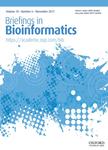版权所有:内蒙古大学图书馆 技术提供:维普资讯• 智图
内蒙古自治区呼和浩特市赛罕区大学西街235号 邮编: 010021

作者机构:School of Medicine The Chinese University of Hong Kong Shenzhen 2001 Longxiang Road 518172 Shenzhen China. Kobilka Institute of Innovative Drug Discovery School of Medicine The Chinese University of Hong Kong 2001 Longxiang Road 518172 Shenzhen China. School of Science and Engineering The Chinese University of Hong Kong 2001 Longxiang Road 518172 Shenzhen China. Department of Computer Science and Information Engineering National Central University 320317 Taoyuan Taiwan. Institute of Bioinformatics and Systems Biology National Yang Ming Chiao Tung University 300093 Hsinchu Taiwan. Center for Intelligent Drug Systems and Smart Bio-devices (IDS2B) National Yang Ming Chiao Tung University 300093 Hsinchu Taiwan.
出 版 物:《Briefings in bioinformatics》
年 卷 期:2024年第25卷第3期
页 面:bbae208页
学科分类:0710[理学-生物学] 07[理学] 09[农学]
主 题:antiviral peptides contrastive learning drug discovery multi-feature fusion strategy sequence analysis
摘 要:Antiviral peptides (AVPs) have shown potential in inhibiting viral attachment, preventing viral fusion with host cells and disrupting viral replication due to their unique action mechanisms. They have now become a broad-spectrum, promising antiviral therapy. However, identifying effective AVPs is traditionally slow and costly. This study proposed a new two-stage computational framework for AVP identification. The first stage identifies AVPs from a wide range of peptides, and the second stage recognizes AVPs targeting specific families or viruses. This method integrates contrastive learning and multi-feature fusion strategy, focusing on sequence information and peptide characteristics, significantly enhancing predictive ability and interpretability. The evaluation results of the model show excellent performance, with accuracy of 0.9240 and Matthews correlation coefficient (MCC) score of 0.8482 on the non-AVP independent dataset, and accuracy of 0.9934 and MCC score of 0.9869 on the non-AMP independent dataset. Furthermore, our model can predict antiviral activities of AVPs against six key viral families (Coronaviridae, Retroviridae, Herpesviridae, Paramyxoviridae, Orthomyxoviridae, Flaviviridae) and eight viruses (FIV, HCV, HIV, HPIV3, HSV1, INFVA, RSV, SARS-CoV). Finally, to facilitate user accessibility, we built a user-friendly web interface deployed at https://***/∼dbAMP/AVP/.